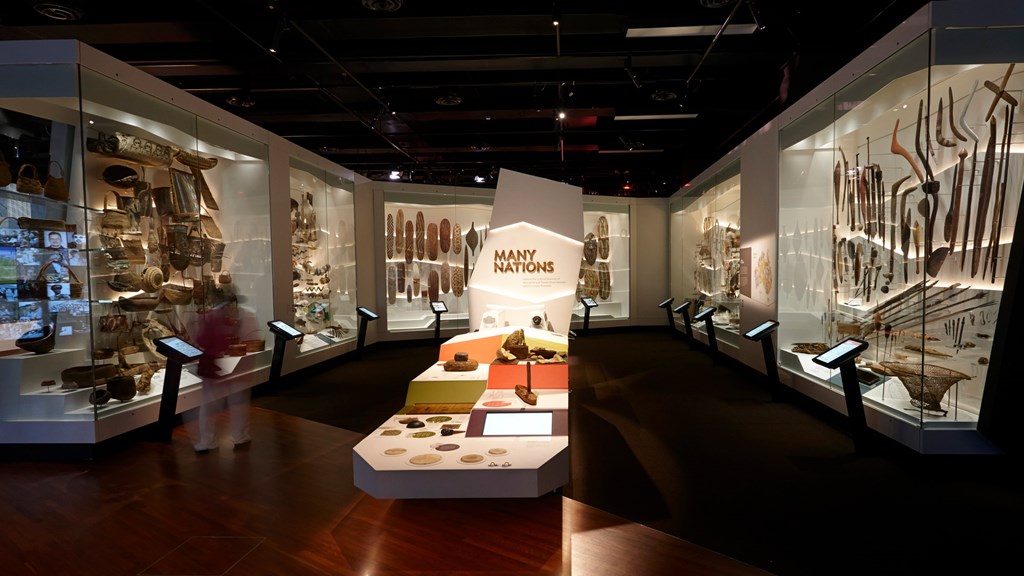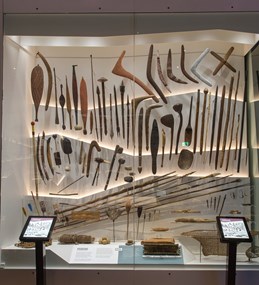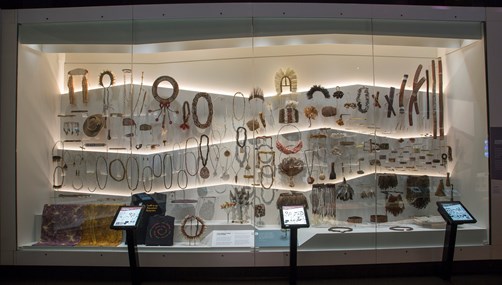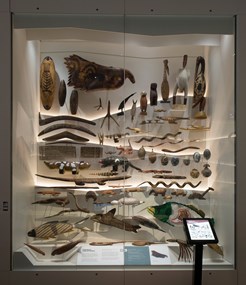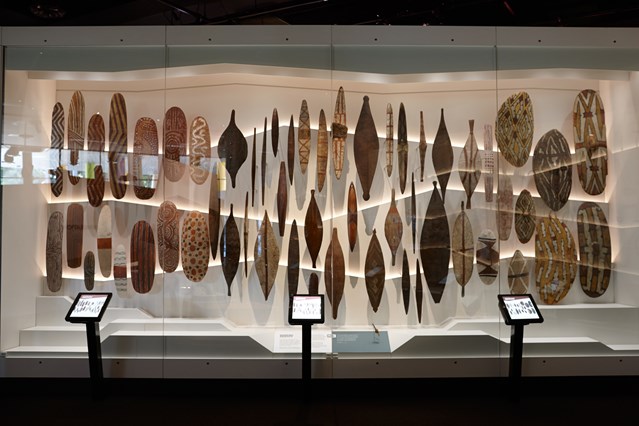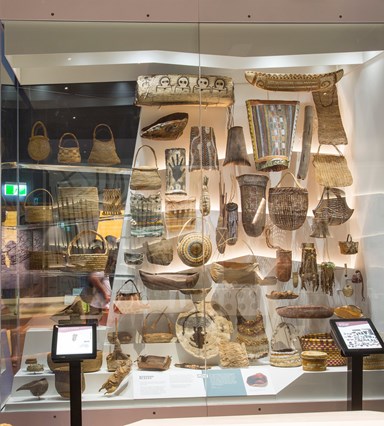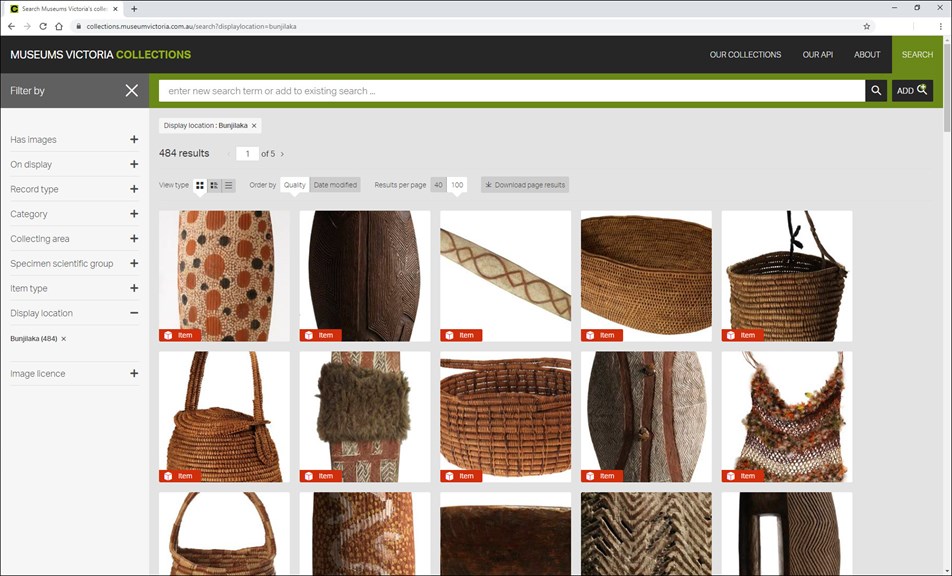Many Nations
Suitable for Year Levels 3–9
The Many Nations section of the First Peoples exhibition shows a map of Australia which outlines the different languages of Australia. More than 255 different languages are spoken across Australia. Each group has their own language and cultural practices.
Read the text on this site. Scan to look at some of the different languages.
Note: The information on which the map is based is contested and may not be agreed to by some traditional custodians. The borders between groups are purposefully represented as slightly blurred. They do not claim to be exact.
Exploring the showcases in Many Nations
The activities in the downloadable workbook will help you to identify the differences in cultural representation across Australia and to think more deeply about what we can learn from the First Peoples of Australia.
The Many Nations section of the exhibition showcases the diverse cultures of First Peoples across Australia. There are five cases that display objects that have been used in daily life for thousands of years and illustrate the vibrant living culture of the First Peoples of Australia.
We can learn a lot about the First Peoples by looking at these objects and thinking about their meaning and significance. You will see examples of objects that have been made recently and others that might be hundreds of years old.
Working Country contains objects that were used in hunting, agriculture, aquaculture and architecture, and includes objects that use introduced materials.
Celebrating Culture contains objects that are used in ceremony and cultural practice. They reflect intricate use of feathers and other natural products including introduced species such as rabbit.
Marking Identity contains shields from across Australia reflecting unique designs of different language groups from across Australia Animal Creations contains artworks that reflect First Peoples connection to the natural world and their relationship with animals both as totems and as living beings.
Keeping Places contains an extraordinary range of containers made from many different materials. Specialist containers for honey or ochre can be found alongside woven baskets.
- What sort of objects do you see?
- What is their significance?
- Why do you think the curator selected these objects?
- What do these objects tell you about culture and history?
Explore Museums Victoria Collections online
- How many objects can you find that fit into each category?
- Find at least three objects from each of the five cases that come from different parts of Australia.
- How are they different to each other?
- Draw your favourite object from each state.
Hint: Make sure you use the filter buttons on the left hand side to call up the objects you want within the collections online search section.
Guide virtual tour
Kimberley Moulton, Senior Curator South Eastern Australia Collection talks about elements of the Many Nations section of the First Peoples exhibition via Virtual tour on Google Maps.
Victorian Curriculum Links
History
Level 3–4
- Identify and describe continuity and change over time in the local community, region or state and as a result of the effects of European exploration (VCHHC069)
- Identify and explain the causes and effects of European settlement an exploration (VCHHC070)
- The diversity and longevity of Australia’s first peoples and the significant ways Aboriginal and Torres Strait Islander peoples are connected to Country and Place (land, sea, waterways and skies) and the effects on their daily lives (VCHHK078)
Level 5–6
- Identify and describe patterns of continuity and change in daily life for Aboriginal and Torres Strait Islander peoples, ‘native born’ and migrants in the Australian colonies (VCHHC085)
- Explain the causes of significant events that shaped the Australian colonies, contributed to Australian Federation and the effects of these on Aboriginal and Torres Strait Islander peoples and migrants (VCHHC086)
- The different experiences and perspectives of Australian democracy and citizenship, including the status and rights of Aboriginal and Torres Strait Islander peoples, migrants, women, and children (VCHHK094)
